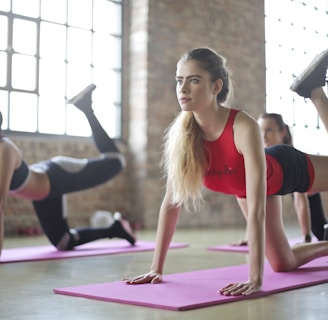Can a Daily Fitness Plan Really Slow the Aging Process?
Information and support for exercise and it's power to slow the aging process.
FITNESSNEWS
M. Edwards
10/15/20252 min read


Short answer: Absolutely.
A consistent, daily fitness plan can slow biological aging, improve how well—and how long—you live.
Exercise doesn’t stop the clock, but it changes how that clock affects your body — helping you move better, think sharper, and feel younger from the inside out.
💪 Why Fitness is the Ultimate Anti-Aging Prescription
Regular physical activity improves nearly every system that time tends to wear down:
Heart & Lung Health: Strengthens cardiovascular fitness and lowers blood pressure.
Blood Sugar Control: Improves insulin sensitivity and reduces risk of diabetes.
Reduced Inflammation: Calms chronic inflammation, a major driver of age-related decline.
Muscle & Bone Preservation: Helps maintain strength, posture, and mobility.
👉 Research shows that people who stay physically active enjoy lower all-cause mortality and reduced risk of chronic disease (source: JAMA Network).
🧬 Exercise and Cellular Aging — The Inside Story
Exercise works its magic all the way down to your cells.
Studies show that consistent physical activity helps preserve telomeres—the protective caps on your DNA—and keeps your epigenetic age (your body’s true biological age) younger than your calendar age.
That means you’re not just living longer—you’re living younger.
Emerging molecular research confirms that people who exercise regularly show “younger” DNA methylation patterns and longer telomeres than sedentary adults.
— National Library of Medicine, PMC Research Review
🧓 What a “Daily Fitness Plan” Looks Like for 50+
You don’t need to live in the gym. A realistic, anti-aging plan blends cardio, strength, flexibility, and balance—and can fit into almost any lifestyle.
Here’s a sample weekly structure:
Tip: Check out fitness books and videos.
Workout Description
1. Brisk Walking / Interval Walking
20–30 minutes of walking with occasional 30–60 second bursts at a faster pace
Use walking poles, choose flat terrain, or walk indoors on a treadmill
2. Chair Squats / Sit-to-Stand
Stand up from a chair (no hands), then sit back down slowly. Do 10–15 reps.
Start with a higher chair or hold onto a countertop for balance
3. Wall Push-Ups
Face a wall, place hands on it, lower chest toward the wall, then push away. 8–15 reps.
Step closer to the wall or reduce range of motion if needed
4. Resistance Band Rows
Anchor a resistance band (door or post), pull elbows back, and squeeze shoulder blades together. 12–15 reps.
Use a lighter band or perform seated
5. Calf Raises + Single-Leg Balance
Rise up on your toes (2 sets of 15), then hold one-leg balance for 10–20 seconds per leg
Use a wall or chair for support as needed. GET STARTED. Don't put it off!

Rejuvenation
AntiAgingCafe@yahoo.com
© 2024-25, Antiagingcafe.net. All rights reserved.
copyright 2024, theAntiagingcafe.com / ANTIAGINGCAFE.NET Copyright 2024, Michael Edwards. All rights reserved. WWW.ANTIAGINGCAFE@YAHOO.COM
As an affiliate, I may earn commissions from qualifying purchases made through links on this site, including Amazon and other partners. This does not affect your purchase price.
AntiAgingCafe.net / TheAntiAgingCafe.com, including our related sites, and other associated channels, including YouTube, Instagram, and Pinterest, provides a "menu" of various topics which may includes or present informational-based content, which is solely for information and educational purposes only, and in no manner does it offer or suggest any medical advice , cures, or recommendations for the reader. No medical advice is given by AntiAgingCafe, whether suggested by third-party articles, their research results, or suggested by third-parties from their studies are provided, or suggested, to our readers. Any news articles, research or studies, claims or product descriptions, provided by various third party assumptions; All information listed on our site, or presented by our sites or channel, are presented for broad informational use only, and in no manner medical or treatment advice. It is the responsibility of the reader to review and evaluate all articles and suggestions posted on these pages. We encourage readers to seek professional medical advice for their specific health concerns. Your health is important, and adequate consultation with qualified professionals is always recommended.